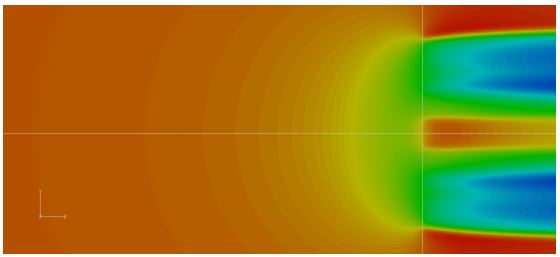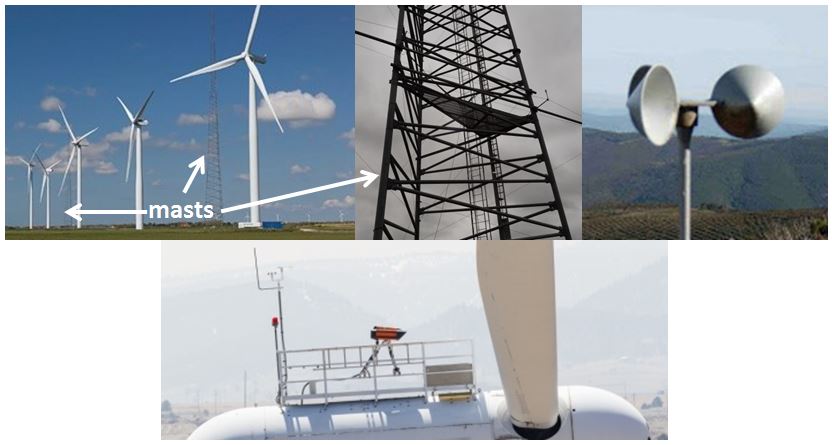Description of Works and background of the 2 new PhD students on UniTTe.
Alexander R. Meyer Forsting
Title of work: Modelling of Wind Turbine Inflow
Section: Aeroelastics and Design
Supervisor(s): Niels Troldborg, Andreas Bechmann, Pierre-Elouan Réthoré
Funding: Danish Council for Strategic Research
Period: September 2014 to August 2017
Background:
Most people will probably have come across, in one form or other, the technology that is now revolutionising our understanding in areas ranging from archaeology to spaceflight, Lidar. The term Lidar derives from an amalgamation of the words “light” and “radar”, which originates from its function of evaluating the reflected light of its laser beam.
Recent development has now enabled Lidars to be used for wind speed measurements, thus allowing it to be applied in the wind energy sector and hence giving new insight into the impact of wind turbines on its surrounding flow field.
The project UniTTe (Unified Turbine Testing, http://www.unitte.dk/) embraces the potential of Lidars by proving their superiority over current procedures in the assessment of power and loads of wind turbines. These parameters are of great importance, as they give an indication of the energy production and the forces acting on the wind turbine. They can hence provide a direct link to the performance and safety of the turbine in operational conditions.

Nacelle mounted Lidar (ZephIR Lidar)
Currently met masts are used for this purpose. Equipped with anemometers they are erected 2- 4 rotor diameters in front of the wind turbine that is to be tested and have to match the height of its tower. Their wind speed measurements are then related to the power output and loads measured on the wind turbine. The limitations of this classic measurement technique are surfacing as wind turbine tower heights and rotor diameters keep increasing, both already reaching 130 m, and more turbines being installed offshore or in mountainous regions. This new generation of wind turbines will require taller and costlier masts. Furthermore they only provide point measurements, which do not sufficiently capture the complex variations in the wind speed with height, which become significant as turbine size keeps increasing, and cannot adequately evaluate the effect of topography.
Lidars on the other hand can be mounted on the nacelle and are reuseable. Moreover it has been shown that they give an accurate representation of the entire wind field around a wind turbine. This previously unknown level detail and precision of its measurements allows for the first time for the validation of theoretical models on a larger scale. As a consequence it should be possible to evaluate the effect of the wind turbine on the approaching flow and its interaction with the surrounding topography. At the heart of the new measurement procedures proposed in the context of UniTTe is the possibility of measuring relatively closely to the wind turbine such that the influence of the surrounding environment becomes negligible in light of the effect of the spinning rotor, thus resulting in a “universal” flow.

Contours of streamwise velocity component approaching wind turbine (Blue-low to red-high). The flow slows down as it approaches the rotor (left to right), the so called blockage effect.
Project
The overall aim of the project is to numerically model the wind turbine inflow in any kind of terrain. Therefore a thorough understanding of the upstream flow modification through the presence of a wind turbine is needed. This will be achieved by applying various numerical simulation methods, ranging from simple potential flow over to computational fluid dynamics, to various wind turbine designs with different control algorithms. In this context the influence of aeroelasticity will also be examined.
Therefore the following three core tasks emerge:
• Modelling the blockage effect of the rotor in flat terrain
The pressure thrust exerted by the wind turbine blades alters the near flow field. The closer to the rotor the stronger is the effect on the flow. This effect needs to be quantified such that the optimal distance for data acquisition can be determined. The complexity of the model will be slowly build up, starting from uniform inflow and steady simulations changing to unsteady flow and at later stages incorporating the atmospheric boundary layer and stability.
The numerical results will be directly compared to full-scale measurements to allow for conclusions on critical areas of modelling.
• The impact of topography on the inflow
Complex terrain changes the flow field in various manners. The extent to which it influences the inflow has to be assessed. The aim is to incorporate the methods used in case of the flat terrain to derive a representative real world model. Comparisons between various topographies and wind turbine designs with different control algorithms should allow for an assessment the assumption of the universality of the near flow field.
• Relate near flow field to free wind speed
A simple numerical model should be established that enables the measurements taken closely to the rotor to be related to the free wind speed. The latter is needed to provide estimates of the annual energy production.
Antoine Borraccino
Title of work: Calibration of nacelle-mounted profiling lidars and derivation of wind parameters for power curve and loads assessment
Section: Test & Measurements
Supervisor(s): Michael Courtney, Rozenn Wagner
Funding: Danish Council for Strategic Research
Period: June 2014 to May 2017
Background:
Performance measurements of wind turbines ensure that the manufacturer’s design meet specifications in operations. To assess how well a wind turbine performs, power curve and loads need to be measured. The power curve will give a real-life relation between wind speed and output power – loads measurements allow to ensure operational safety of the wind turbine. Both necessitate wind speed measurements. Current international standards require to measure the wind with a mast, far in-front of the rotor and at hub height. Considering the increasing size of wind turbines, it has been demonstrated that measuring only at hub height is not sufficient since variations in winds with height (shear), the turning of the wind (veer) and turbulence effects on the power curves can no longer be neglected.

Top left and center: DTU Wind Energy’s test section for large wind turbines and mast, Høvsøre (DK) – Top right: Cup anemometer (WindSensor) – Bottom: nacelle-mounted lidar (Avent Lidar Technology)
Laser anemometers (lidars) can be used instead of a mast to remotely measure wind speeds, between 30 and 300m at short range, and up to 5-10 km for long range lidars. Ground based lidars are presently being used to measure wind profiles. They offer a practical and reasonably accurate solution for measuring wind over the entire rotor disk. The use of lidars avoids the need for meteorology mast erection that can be tremendously expensive for wind turbines performance assessment, particularly offshore and in complex terrain. Additionally, lidars can easily be moved and used afterwards in other measurement campaigns when tall masts can have more environmental impacts and cause public acceptance issues.
Project
The project focuses on investigating how best to use the data measured by newly available nacelle-based profiling lidars for both power performance and load verification of wind turbines. It is integrated in a larger and structured research project called UniTTe (Unified Turbine Testing, http://www.unitte.dk/). The project will use data from 4 measurement campaigns (approximately 6 months each) and is designed in the following steps:
• Development of calibration procedures for nacelle-based profiling lidars: the procedures will allow ensuring that the lidar anemometer measurements are both accurate and precise, by comparison of the lidars in-field measurements with those of other types of anemometers, calibrated and used as a reference. Uncertainties of the measured parameters are subsequently assigned.
• Turbulence measurement from nacelle-mounted profiling lidars: the measurements at differing locations and heights will be combined in order to retrieve turbulence parameters that are essential to be considered for wind turbine performance.
• Characterisation of the wind for power performance and load verification. This part is concerned with wind field reconstruction and the derivation of parameters – such as shear, veer, equivalent wind speed, etc. – by aggregating the lidars measurements over the area swept by the rotor of the wind turbine.
• Derivation of uncertainties specific to the use of lidars in power performance and loads assessment and using the newly developed procedures and aggregated parameters, and the measurement campaigns data.
Perspective
The project will substantially contribute to the next generation of wind turbine testing procedures – i.e. universal procedures applicable offshore and onshore in flat and mountainous terrains – using profiling nacelle lidars measuring quite close to the rotor and over a range of heights.